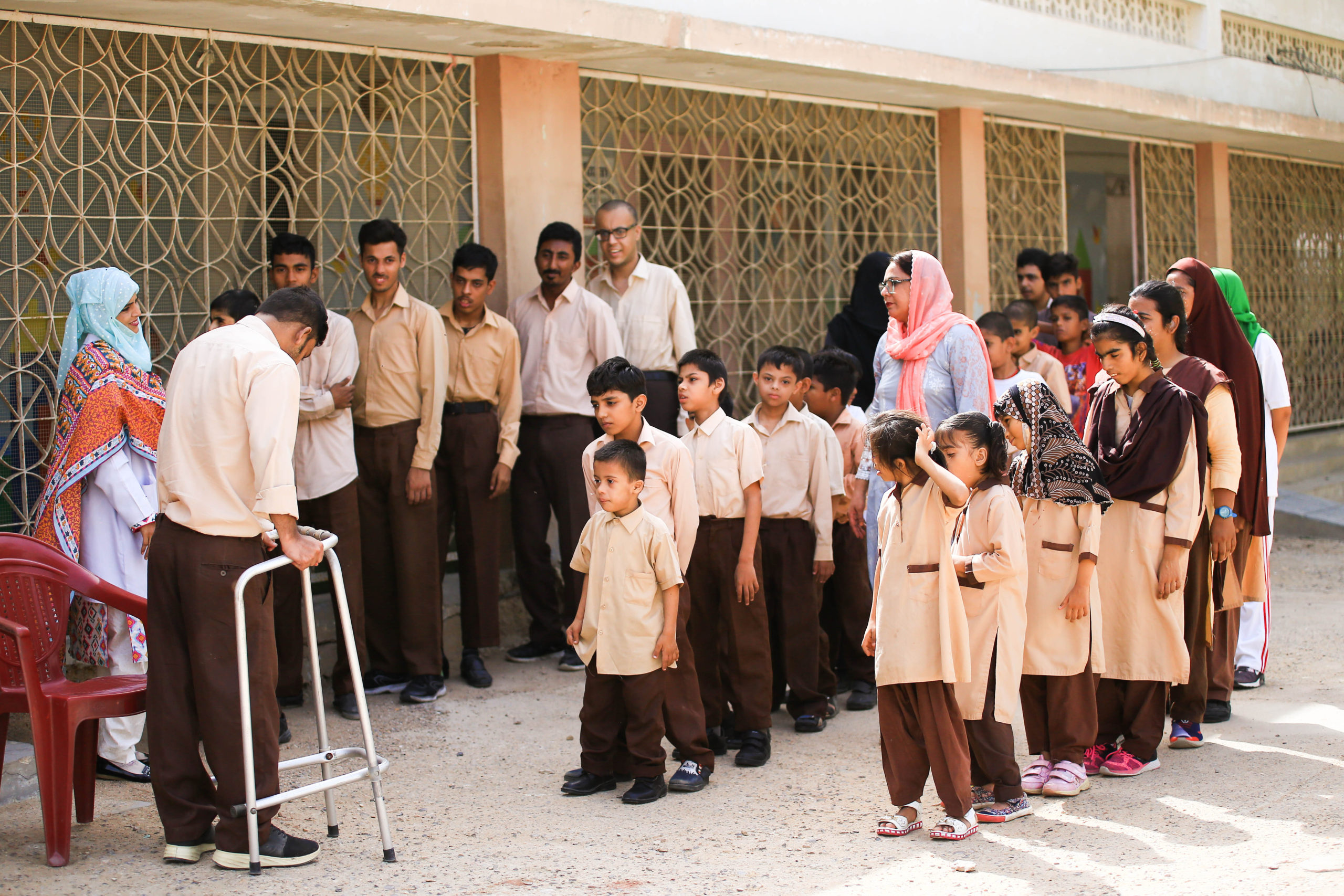About Our Organization

About Rozan
A child with development issues can do well in school but is likely to need individualized help. Fortunately, states are responsible for meeting the educational needs of children with disabilities.
For children up to age three, services are provided through an early intervention system. Staff work with the child‘s family to develop what is known as an individualized family services plan, or IFSP. The IFSP will describe the child’s unique needs. It also describe the services the child will receive to address those needs. The IFSP will emphasize the unique needs of the family, so that parents and other family members will know how to help their young child with development issues . Early intervention services may be provided on a sliding – free basis, meaning that the cost the family will depend upon their income. In some states, early intervention services may be at no cost parents.
For eligible school –aged children (including preschool) Special education and related services are made available though the school system. School staff will work with the child’s parents to develop and individualized education program, or IEP. The IEP is similar to an IFSP. It describes the child’s unique needs and the services that have been designed to meet those needs. Special education and related services are provided at no cost to parents. Many children with development issues need help with adaptive skills, which are skills needed to live, work and play in the community.
Teachers and parents can help a child on those skills at both school and at home. Schools of these skills include:
- Communicating with other.
- Taking care of personal needs (dressing, bathing, going to bath room)
- Health and safety.
- Home living (helping to set the table, cleaning the house or cooking dinner)
- Social skills (manners, knowing the rules of conversion, getting alone in a group playing a game).
- Reading, writing, and basic math and as they get older, skills that will help them in the work place).
To preserve the future of country form destruction by fulfilling the necessities of deserving peoples, and take them out from disappointment.
Education Level in Pakistan
Education has never been Pakistan’s strong point. The condition of schools all over the country and the quality of education being imparted there are going from bad to worse, day by day.
Litracy Rate in Pakistan
Primary Education: Only 63% of Pakistani children finish primary school education. Furthermore, 68% of Pakistani boys and 72% of Pakistani girls reach grade 5.
Litracy by Province (1972 to Present)

Causes of illiteracy
Main causes are that urban areas in Pakistan are less whereas rural areas are more, rural areas are not developed and most of the areas don’t have schools and if they do then they are of very low standards, in many areas people don’t send their daughters to schools as they believe it is worthless to send them, it is just wasting of money. This is very hard for them to attend the school as schools are in bad conditions. Often tables and benches are missing and children have to sit on the ground. Moreover, toilets are mostly nonexistent. Those boys and girls who manage to attend school against all odds are taught by ill-educated teachers who are often absent. Moreover mostly families are poor who do not afford the expenses of school. They do not think that education is important for their children.
The recent census tallies in China and India show that Pakistan is substantially behind the two large Asian nations. China’s literacy rate is near 90% and India has reached 65%. Pakistanis around 50 %, this means we need to do better. Moreover, it’s a moment of shame too, because we have lesser population and are not as huge as China and India.
Aim and Objective
1. To face the challenges of current society problems such as mentally, emotionally, psychological and self care problems by giving better education and by providing intensive care.
2. To educate people about upcoming problems of special children for improving positive thinking about these issues.
3. To inform and provide helping needs to the parents for finding solution, and immediate step about special children need and problems.
4. To provide better education according to the needs of society and to follow the mental approach of Student so that they survive and face the ups and downs of the society.

Come and Take a Step

Here is the text Establishment of stitching centers.
• Staff Salaries.
• School bus for pickup/drop off kids free of charge
• Physical Therapy equipment
• Education supplies
• Sports and Recreation facility
• Occupational Therapy
• Behavior Modification
• Speech Therapy
• Music Therapy
• Psychiatrist
• Medical Doctor
• Medical supply
• Computers
• Playground
